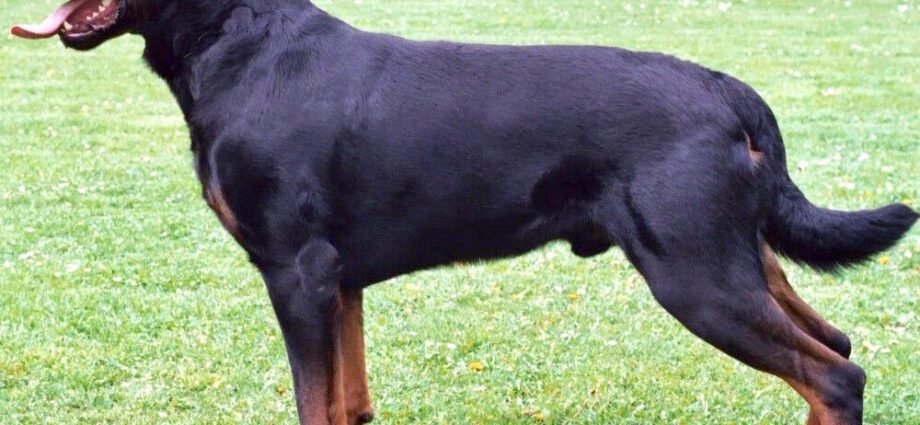Contents
Rottweiler
Physical Characteristics
The Rottweiler is a large dog with a stocky, muscular and robust build.
Poil : black, hard, smooth and tight against the body.
Size (height at the withers): 61 to 68 cm for males and 56 to 63 cm for females.
Weight : 50 kg for males, 42 kg for females.
Classification FCI : N°147.
Origins
This breed of dogs originated from the town of Rottweil, located in the Baden-Württemberg region of Germany. The breed is said to be the result of crosses that took place between dogs that accompanied the Roman legions across the Alps to Germany and native dogs from the Rottweil region. But according to another theory, the Rottweiler is a descendant of the Bavarian mountain dog. The Rottweiler, also called “Rottweil butcher’s dog” (for Rottweiler butcher dog), has been selected over the centuries to keep and lead herds and to protect people and their property.
Character and behavior
The Rottweiler is endowed with a strong and domineering character which, coupled with its physical appearance, makes it a deterrent animal. He is also loyal, obedient and hardworking. He can be both a peaceful and patient companion dog and an aggressive watchdog towards strangers who seem threatening to him.
Common pathologies and diseases of the Rottweiler
According to a study by the Rottweiler Health Foundation with several hundred dogs, the average lifespan of the Rottweiler is around 9 years. The main causes of death highlighted in this study are bone cancer, other forms of cancer, old age, lymphosarcoma, stomach upset and heart problems. (2)
The Rottweiler is a hardy dog and rarely sick. However, it is prone to several common hereditary conditions typical of large breeds: dysplasias (of the hip and elbow), bone disorders, eye problems, bleeding disorders, heart defects, cancer and entropion (twisting of the eyelids towards the neck). ‘inside).
Elbow dysplasia: numerous studies – in particular carried out by The Orthopedic Foundation for Animals (OFA) – tend to show that the Rottweiler is one of the breeds, if not the breed, most predisposed to elbow dysplasia. Often this dysplasia is bilateral. Lameness can appear in dogs from a young age. An x-ray and sometimes a CT scan are needed to formally diagnose dysplasia. Arthroscopy or heavier surgery may be considered. (3) (4) Studies carried out in various European countries highlight very high prevalence elbow dysplasia in Rottweilers: 33% in Belgium, 39% in Sweden, 47% in Finland. (5)
Living conditions and advice
Rottweiler training should start as early as possible. It must be rigorous and strict, but non-violent. Because with such physical and behavioral predispositions, the Rottweiler can become a dangerous weapon if it is cruelty trained for this purpose. This animal does not tolerate confinement and needs space and exercise to express its physical qualities.










